Last month, Jack brought a stunning and shameful fact to my attention: In two years of doing Bird of the Week, the Discourse Blog Bird Editors (me and Jack) had failed to feature a falcon even once. This seemed utterly impossible, but the blog records don’t lie. We deeply regret the error! We swiftly righted this wrong by doing an ode to the Lanner Falcon (what a bird!!) and rested easy knowing we’d recognized our mistake and paid proper respect to this particular kettle of birds.
Then a few days later, like a holy message from the cosmos flying on the wings of angels, I saw this tweet:
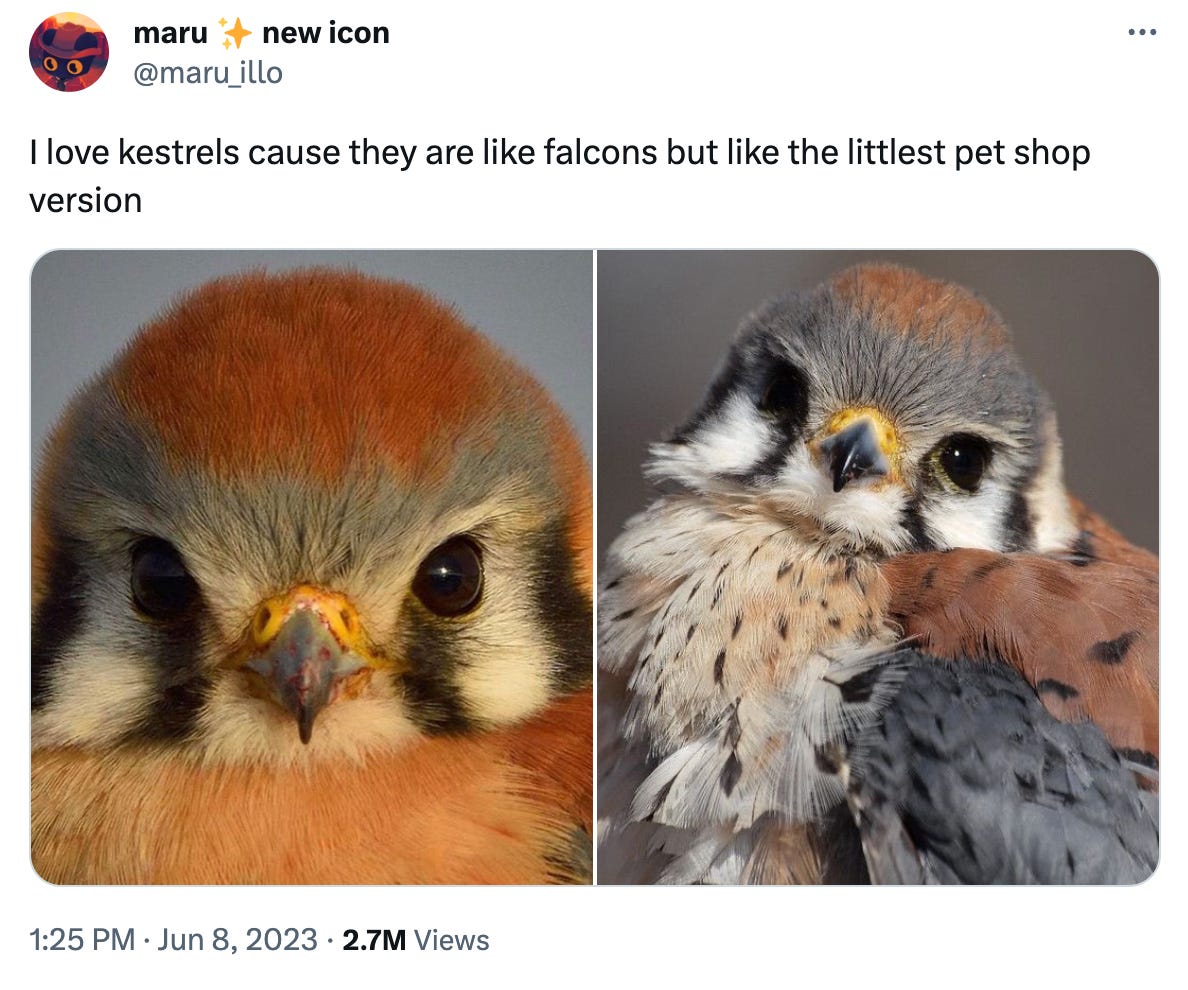
I smiled, I faved, I cocked my head like the bird on the right. I sent it to Jack, who, in another twist of fate, had just proposed doing themed months dedicated to a single species.
“Ok,” he wrote back. “We’re doing falcon month.”
We’re doing falcon “month”!!!! Yes, the Lanner Falcon blog was technically in early June, who cares. Anyway, say hello to falcon #2, the “the littlest pet shop” brand of falcon, the American Kestrel. Eeeeeeeee!
I mean!!!
Come ON.
Stoppppp.
Nothing on earth tops the combination of cute and ruthless and this bird delivers hard on both. On the one hand, they’re fast, graceful fliers. On the other hand, they have a loud, “shrill” call that’s frequently described as "killy, killy, killy." On the one hand, they adorably pump their tails and bob around to stay balanced while perched. On the other hand, they snatch prey right off the ground, and engage in menacing hunting tactics known as “sit and wait”, or “hover hunt” or “kiting.” Sorry but this is serial killer territory! Someone get Netflix on the phone immediately (after the strike ends, of course).
There’s so much to say about these tiny demons. They’re the smallest falcon in North America, clocking in at about the size of a robin. Their size is how they got the nickname of “sparrow hawk,” but their other nickname, "grasshopper hawk,” comes from their diet. In addition to grasshoppers, American kestrels eat moths, and other insects, as well as small snakes, lizards, mice…and even other small birds. Like I said, ruthless!! To be fair, they too are preyed upon by other, larger birds like the Cooper’s hawk, so I guess all’s fair in bird love and war.
Look at these lunatics go:
American kestrels are a rare kind of falcon where the male and the female have different coloring, but both sexes have pairs of black vertical lines on the sides of their faces, sometimes referred to as a “mustache” and a “sideburn." Ugh, so cool. They also have two black patches on the back of their heads known as ocelli, or “little eyes,” which are designed to confuse predators attempting a sneak attack.
Speaking of eyes, American kestrels can see ultraviolet light! They use that ability to track potential prey, who leave urine trails that the kestrel then uses to hunt them down. Again, serial killer stuff! If you watched this play out on a movie screen you’d be SCREAMING for those little rodents to simply stop peeing everywhere. But this is the real world and we stan the kestrel. Sorry, mice.
Also please look at this photo of a kestrel on the hunt. That is a meme begging to be memed if I ever saw one.
American kestrels also participate in communal hunting, sharing some leftist tendencies with their brothers in falconhood, the Lanners. Go off kings!
Another vaguely leftist trait of American kestrels is that they don’t make their own nests, but instead inhabit existing cavities like natural tree holes, abandoned animal-made spaces, or man-made structures like nesting boxes. In other words, they’re green, anti-development heroes who steal from the rich.
Kestrels are, sadly, also disappearing at an alarming and mysterious rate, a trend that’s especially unusual for birds of prey, which, as The New York Times put it, are usually “considered a conservation bright spot.” Historically, their thinning numbers could be traced (and corrected) in the case of dangerous pesticides, but disappearing habitats and other factors related to climate change have led to a distressing head-scratcher for scientists and researchers.
For now, let’s appreciate the American kestrel in all its glory. May these badass cutie patooties stay adorably hardcore for many years to come.
Stay tuned for more falcon fun in the coming weeks and please let us know what other bird species you’d like us to dedicate an entire month to here at Bird of the Week!
A reminder: you can check out our complete Bird of the Week list here, and get in touch with your bird suggestions at hello@discourseblog.com.


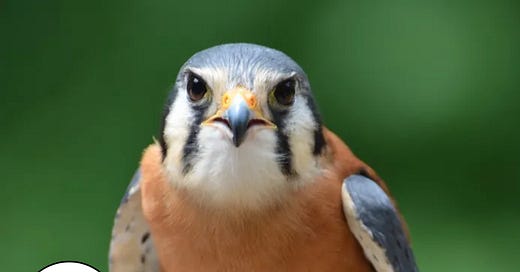



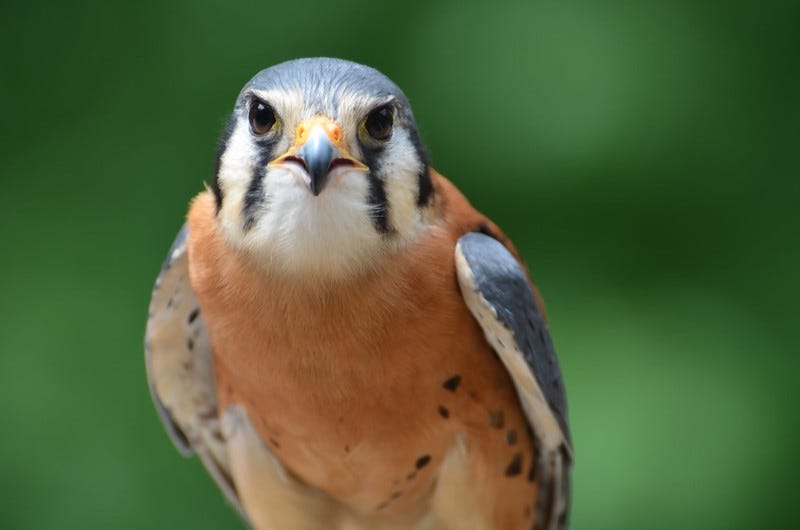
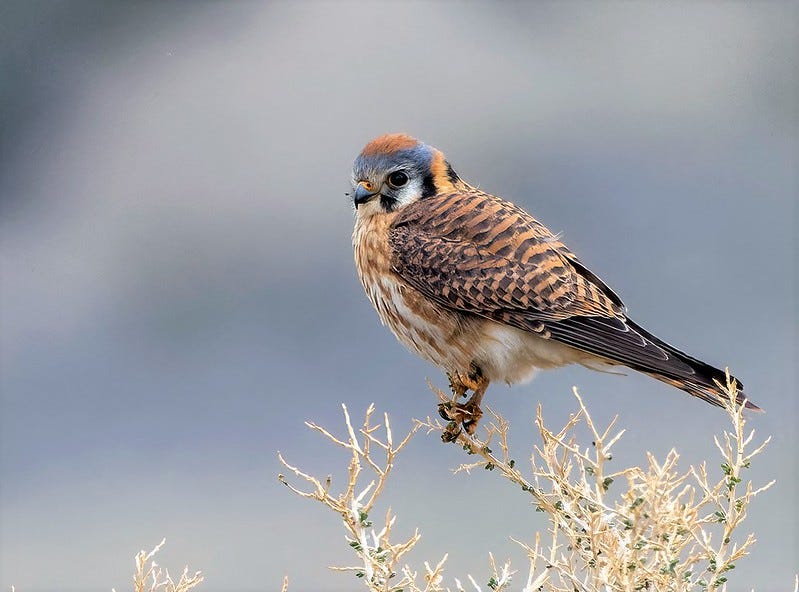
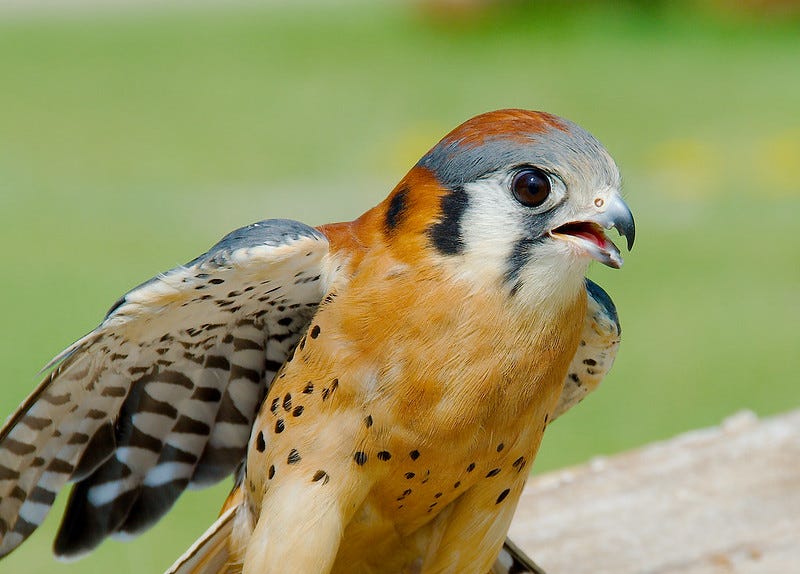


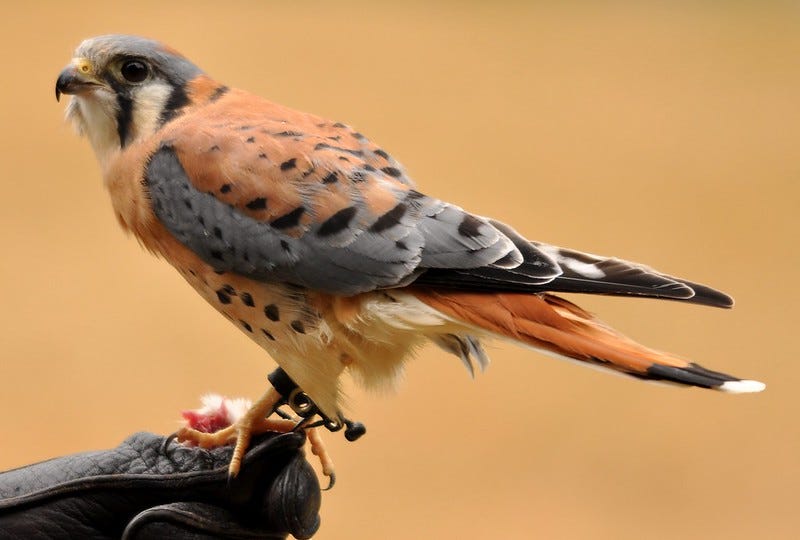
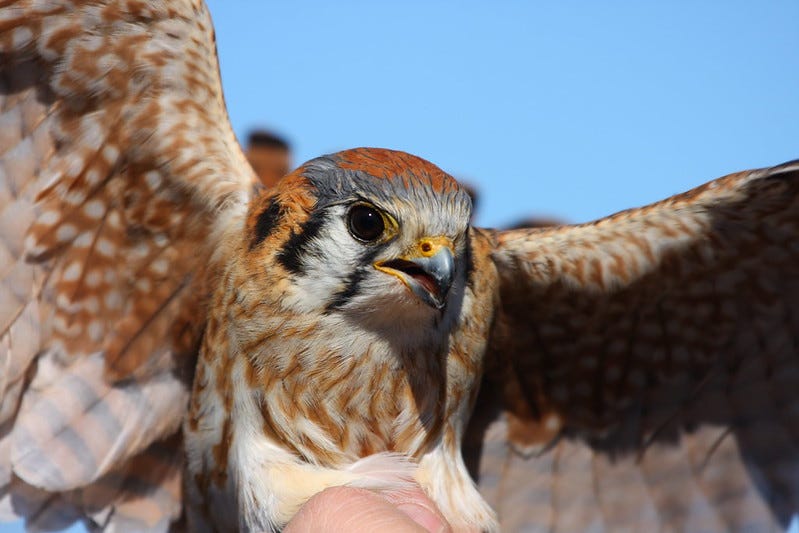
Saw two of these at The Peregrine Fund's World Center for Birds of Prey outside Boise, ID. and they are so damn cool that my wife and I immediately donated to "sponsor" one named Penny. The fact they are so deadly but most people don't even know they exist is the most "serial-killer" thing about them and that just ups their cool factor.
Side note: The Birds of Prey Center in Boise ruled and I absolutely recommend it to anyone moving through that area. With a focus on raptors we were able to see killer birds of all kinds, like the Harpy Eagle and the super endangered California Condor. This specific location is part of the effort to support, raise and release condors back into the wild so if you love birds of Prey please visit and donate. Bonus: Their shirts kick ass so you can look sweet while supporting birds!
https://shop.peregrinefund.org/collections/online-apparel/products/bird-collage-shirt
I literally pumped my fist when I saw the subject line in my inbox, kestrels are so good!!!